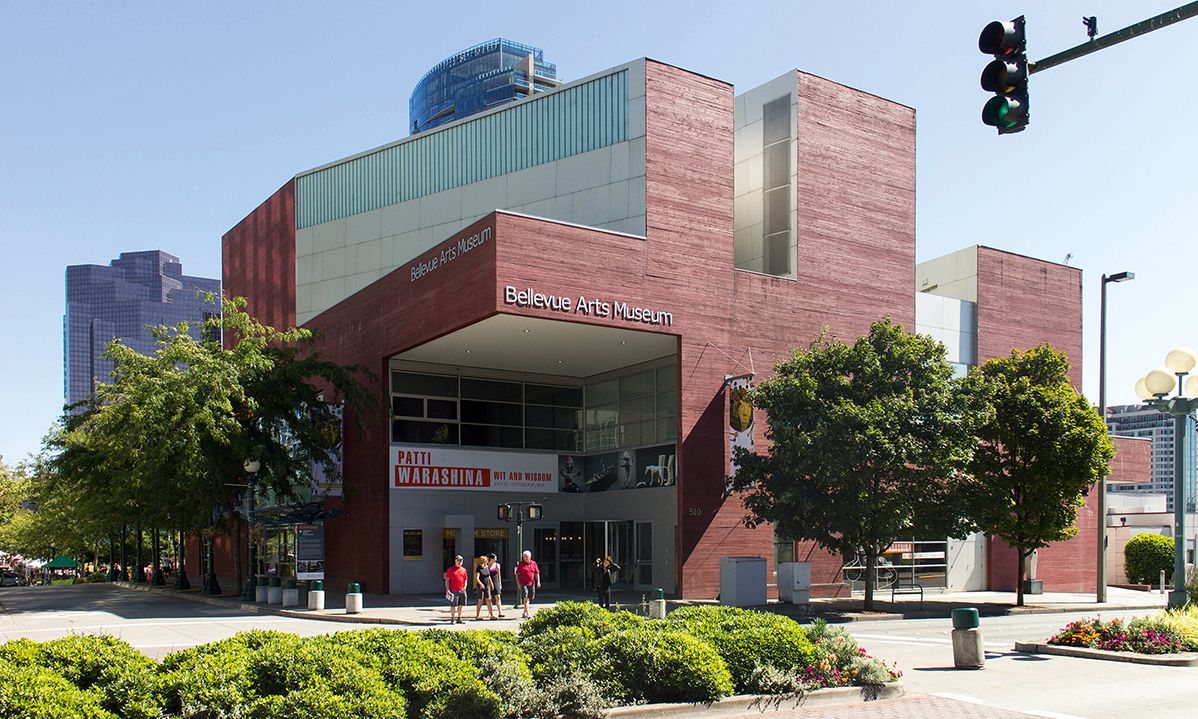Bellevue Arts Museum Photo: Evan Chakroff
Despite raising an emergency $350,000 to keep it going through the summer, Washington state’s Bellevue Arts Museum (Bam) announced last week that it was closing its doors and ceasing day-to-day operations.
Most of the museum’s employees have been laid off, the board has resigned and the management of the organisation is now being overseen by a court-appointed receiver, Shelly Crocker, who will ensure that creditors are repaid and the non-profit is restructured to be financially stable. This might result in a merger with a big-name institution, according to Bam’s executive director, Kate Casprowiak Scher, who will remain on staff part-time with a small team during the transition. Or it could mean the sale of Bam’s Steven Holl-designed home.
“We are still figuring it out,” Scher tells The Art Newspaper, adding that she hopes to bring in enough revenue during the reorganisation, through private events and pop-ups displays, to capitalise on Bam’s location and its building—its biggest asset. The museum also promises to continue managing the 2025 edition of its highly popular annual arts fair in Bellevue Square, which has run since 1947.
“I'm hoping to sustain us long enough to form a partnership or a merger with a larger institution,” Scher says. “And if it's not something from the local community, then I would love for the museums in New York to think, ‘Oh, do we want a Western outpost?’ A Guggenheim West would be amazing.”
Joining forces with a bigger museum could potentially bring in a regular source of funding, which Bam has historically struggled to maintain, since it has no endowment, as well as name recognition and access to a permanent art collection, another thing Bam lacks. For much of its existence, the museum has relied on big one-time donations from long-time donors or board members to continue operating. “I know the museum has to change,” Scher says. “It hasn't been sustaining itself for a really long time.”
Indeed, Bam’s financial troubles stretch back decades. In the 1990s, the museum decided to move out of smaller gallery spaces in a shopping centre, and build a permanent home designed by Holl, raising $23m in a major capital campaign. But plans to use some of that funding to establish an endowment the museum could draw on for operations were set aside due to rising construction costs and the early 2000s bursting of the dot-com bubble and subsequent recession. Bam opened its new building in 2001, but it had to close its doors in 2003, before reorganising to focus on both arts and crafts, and reopening in 2005.
With Crocker coming in as receiver, Scher hopes the museum will be able to keep its building until a long-term solution is found. “There are no guarantees, but I have confidence in her, and obviously in her professional ability and her track record,” Scher says.
Crocker has successfully rescued other non-profits, including the Infectious Disease Research Institute in Seattle, which came close to shutting down just before the Covid-19 pandemic but was able to secure new research agreements and grants worth nearly $100m, create a new board and find a philanthropic partner, renaming itself the Access to Advanced Health Institute. Crocker also has some experience in the arts, serving on the board of the Museum of Northwest Art in La Conner, Washington, which has gone through its own financial and leadership struggles.
But if Bam is not able to generate the needed revenue through the transition, its building could be sold. “Every effort first would be made to sell it to a museum or non-profit,” Scher says. “I still have my eyes focused on some viable art institution being here, whether it's Bellevue Arts Museum or something else. It’s too early to tell.”

